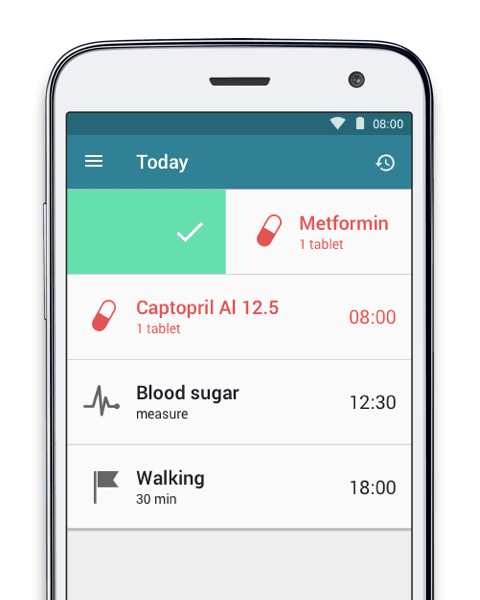At the age of five, my doctor told me that when people have something such as diabetes, they are given other things to compensate. “You were given intelligence”, he said. That made me feel proud, and I am also proud of my excellent health after 56 years of living with diabetes. I attribute that to discipline and a positive approach to diabetes.
With the surge in Type 2 diabetes, particularly in the United States, where it now accounts for 90-95% of all diabetes cases, comes an equal rise in anxiety and fear. Thankfully, lifetime members of the diabetes club have a lot of wisdom to share, regardless of the technical differences between types 1 and 2.
It does take tremendous discipline, but these nine strategies have kept me healthy and feeling positive for many years. The result is that I have not had any complications from diabetes, despite having it for most of my life.
A Guest Post by Elizabeth Callaghan
1. Overcome your fear of diabetes
In many cases, the fear of diabetes worsens the effects of it through lack of aggressive treatment. The first step to counteracting this is through “mindfulness training,” which a 2014 study by DiabetesCare, showed can produce:
“....significant positive effects on anxiety, well-being, and diabetes-related distress.”
This training indeed transformed my ability to be aware, stay in the present, and reduce negative feelings. Assistance comes from many quarters, for example, organizations like “Philosophy Works” in New York City, while others find yoga and meditation an outstanding way to foster more optimism.
Find more resources at www.positivediabetes.com.
2. Find the best medical care available
Not all treatment centers are created equal, so do your research, starting with a Google search of “best hospitals for diabetes and endocrinology.” Look for one with diabetes specialists, who can assist you in good management. I have had outstanding care from The Joslyn Center and New York Presbyterian Hospital at Columbia University, but you don’t need to live in a big city to find quality care.
When I lived in Ithaca, New York, a small town in upstate New York without a major medical center with diabetes treatment programs, I traveled to Syracuse, a 1.5-hour drive, to see a specialist at the Joslyn Diabetes Center. In the long run, it saves time, as better management translates into fewer visits overall.
3. Follow a healthy food program
Eating right and maintaining a healthy weight is the most important part of diabetes management. Experts recommend the same diet as for people without diabetes.
Most days, I follow the same basic plan: two eggs and gluten free toast with fruit for breakfast; a large salad with protein and a carb, such as a cup of kidney beans, for lunch; and for dinner, two cups of vegetables, a carb such as a potato and fruit, and a protein, such as chicken. And a small amount of peanut butter and fruit for a snack. I don’t follow it perfectly, and sometimes make changes, but the basic formula works for me.
A good reference for more food rules is at www.diabetes.org.
4. Carry a glucose meter and check levels regularly
It is important to know your glucose levels so that you can make dietary or medication changes. I carry a tiny meter called “Freestyle Lite” and check my glucose levels before meals and at other times during the day when I feel something is not quite right. By carrying the meter and checking glucose levels daily, I stay in better shape. You only need to draw the tiniest amount of blood, like a small pinprick. So it is practically painless to check glucose levels.
5. Check into a rehabilitation facility
For many people new to living with type 2 diabetes, managing requires monumental lifestyle changes and tremendous discipline that may not come naturally. Inpatient programs at clinics like Shades of Hope, in Texas will guide and motivate you every step of the way during stays as short as 6 days and as long as 42 days.
Here, you learn through practice how to eat well and exercise. I checked into a similar program called Hope in Los Angeles (no longer in existence) for my compulsive overeating, and it made all the difference.
6. Attend support groups
There are 12-step programs for more than just people with alcohol and drug problems. Overeaters Anonymous supports and guides its members through meetings and programs, as well as instilling a sense of fellowship that helps to motivate. Friends of mine who have attended groups like OA and Food Addicts Anonymous sing their praises.
7. Share your experience with diabetes with family and friends
“It’s ok. I’m glad you are taking good care of yourself.”
People with diabetes often have a stigma about their illness. They feel ashamed, as though they have done something wrong. I too had shame about diabetes and kept it a secret, believing people would not understand or be able to help me. In reality, my friends have been more than supportive. When I told a friend one day my blood sugar was low and that I needed something to eat, she calmly responded, “It’s ok. I’m glad you are taking good care of yourself.” That has been the kind of reaction I get whenever I tell someone I have diabetes.
8. Do 30 minutes of aerobic exercise at least 5 days per week
There’s no way to escape it; taking better care of your health means exercise. As Courtney Melrose of the Russell Berrie Center for Diabetes at Columbia University Medical Center points out.
“Exercise can decrease the need for medication, foster positivity, and increase oxygen to your brain.”
Anything helps, but aim for at least 30 minutes of walking five times a week to make a noticeable impact. Indeed, a 30-minute spin on my exercise bike makes all the difference in how I feel, not to mention keeping my glucose levels down.
9. Stay on top of research
There are frequently new discoveries in diabetes research that can dramatically improve your health. On March 22nd, 2016, a study from Newcastle University and published in Diabetes Care, found that patients could reverse type 2 diabetes by losing weight, even those who have had the condition up to around 10 years.
Learning to live with diabetes may be daunting. While each person will find their own way of managing the condition, these tips have stood the test of time for someone living with type 1 diabetes, and may prove beneficial for those aiming to live a healthy lifestyle with type 2.
If you like this post, you may also like:



